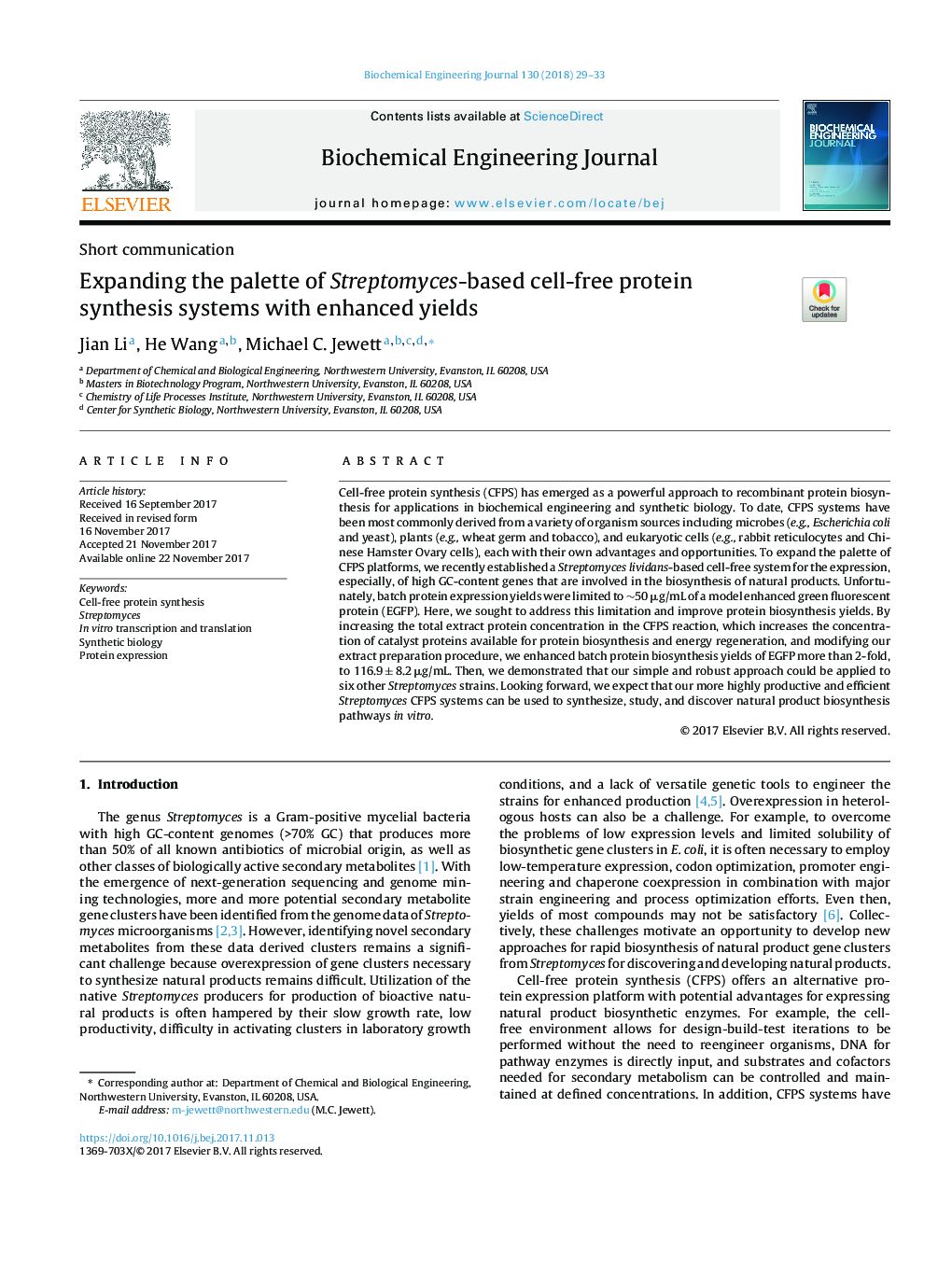| Article ID | Journal | Published Year | Pages | File Type |
|---|---|---|---|---|
| 6482300 | Biochemical Engineering Journal | 2018 | 5 Pages |
Abstract
Cell-free protein synthesis (CFPS) has emerged as a powerful approach to recombinant protein biosynthesis for applications in biochemical engineering and synthetic biology. To date, CFPS systems have been most commonly derived from a variety of organism sources including microbes (e.g., Escherichia coli and yeast), plants (e.g., wheat germ and tobacco), and eukaryotic cells (e.g., rabbit reticulocytes and Chinese Hamster Ovary cells), each with their own advantages and opportunities. To expand the palette of CFPS platforms, we recently established a Streptomyces lividans-based cell-free system for the expression, especially, of high GC-content genes that are involved in the biosynthesis of natural products. Unfortunately, batch protein expression yields were limited to â¼50 μg/mL of a model enhanced green fluorescent protein (EGFP). Here, we sought to address this limitation and improve protein biosynthesis yields. By increasing the total extract protein concentration in the CFPS reaction, which increases the concentration of catalyst proteins available for protein biosynthesis and energy regeneration, and modifying our extract preparation procedure, we enhanced batch protein biosynthesis yields of EGFP more than 2-fold, to 116.9 ± 8.2 μg/mL. Then, we demonstrated that our simple and robust approach could be applied to six other Streptomyces strains. Looking forward, we expect that our more highly productive and efficient Streptomyces CFPS systems can be used to synthesize, study, and discover natural product biosynthesis pathways in vitro.
Keywords
Related Topics
Physical Sciences and Engineering
Chemical Engineering
Bioengineering
Authors
Jian Li, He Wang, Michael C. Jewett,
